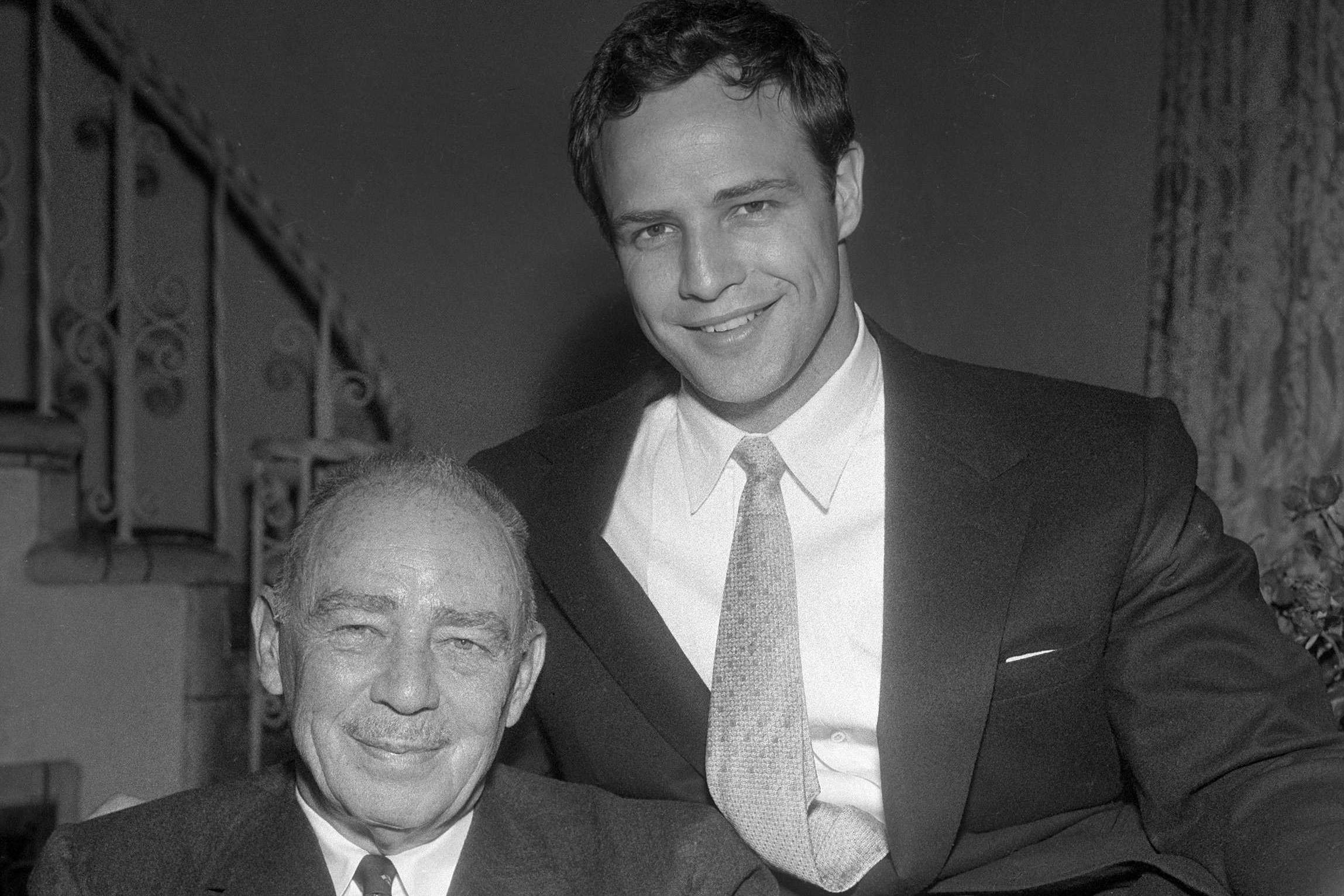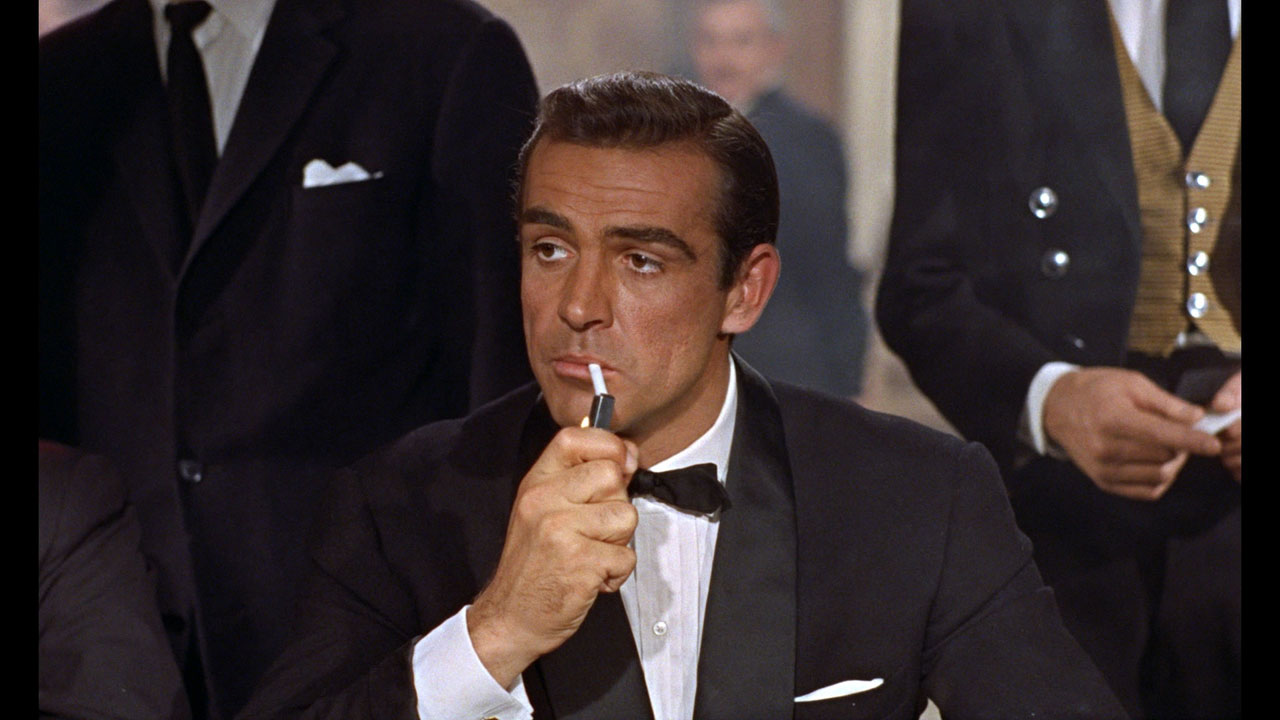The first thing you see in Stevan Riley’s documentary Listen to Me Marlon is Marlon Brando’s disembodied head, in primitive 3-D vector imagery. The first voice you hear — indeed, the only voice you hear throughout the film — is that of Brando himself, performing the “tomorrow and tomorrow” speech from Macbeth. He then reflects on the technology that has created the head that hovers before us. “Maybe this is the swan song for all of us,” muses Marlon (we can only imagine what he would have thought of Laurence Olivier’s visage getting pilfered for a cameo in Sky Captain and the World of Tomorrow two decades later), and from that elegiac opening we’re drawn into the currents of his life as he rewinds his personal history, fast-forwards through it, switches thoughts mid-stream like an audio cassette flipping over.
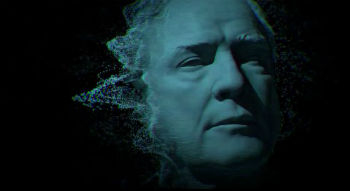 The analogy is apt here because Riley has culled Brando’s ceaseless narration together from audio tapes the actor recorded to himself throughout his life, that have only recently been made available by his estate. Some of the tapes contain meditative thoughts meant to calm his mind (the film’s funniest moment comes when he reminds himself about the good things: “Apple pie, and ice cream, and brownies in milk…. but you must not eat them quite so often”). Others are reflections on his life, the ups and downs, the fame and disgrace. Throughout, a kaleidoscope of clips underline his narrative: grainy interior shots of quiet country homes meant to recall Brando’s troubled youth; behind-the-scenes snippets of him horsing around with Montgomery Clift; a showstopping moment when his alcoholic, abusive father sits alongside him on a talk show and gives his son a back-handed compliment; an interview segment in which he openly flirts with a female journalist from Boston; and of course those famous moments in his films, everything from A Streetcar Named Desire to Superman. The title Listen to Me Marlon is both truth in advertising and the thrust of the documentary: this is Marlon facing himself in his last role, that of father confessor, psychologist, tortured ego. You could say Brando gives a performance of his life as well as the performance of his life.
The analogy is apt here because Riley has culled Brando’s ceaseless narration together from audio tapes the actor recorded to himself throughout his life, that have only recently been made available by his estate. Some of the tapes contain meditative thoughts meant to calm his mind (the film’s funniest moment comes when he reminds himself about the good things: “Apple pie, and ice cream, and brownies in milk…. but you must not eat them quite so often”). Others are reflections on his life, the ups and downs, the fame and disgrace. Throughout, a kaleidoscope of clips underline his narrative: grainy interior shots of quiet country homes meant to recall Brando’s troubled youth; behind-the-scenes snippets of him horsing around with Montgomery Clift; a showstopping moment when his alcoholic, abusive father sits alongside him on a talk show and gives his son a back-handed compliment; an interview segment in which he openly flirts with a female journalist from Boston; and of course those famous moments in his films, everything from A Streetcar Named Desire to Superman. The title Listen to Me Marlon is both truth in advertising and the thrust of the documentary: this is Marlon facing himself in his last role, that of father confessor, psychologist, tortured ego. You could say Brando gives a performance of his life as well as the performance of his life.
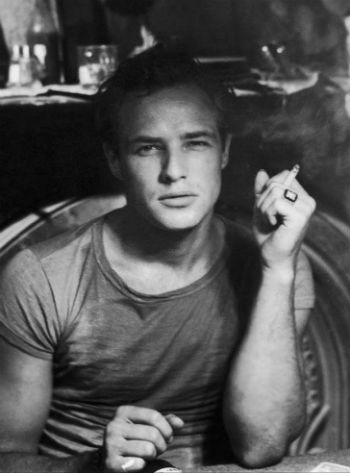 What you get from Brando’s private tapes isn’t especially revelatory or shocking. As expected, you have warm praise for Stella Adler and Method acting; ruminations on missed opportunities and enormous appetites (food, sex, family, everything); paeans to Tahiti where he relieved his White Man’s Burden with long sabbaticals amongst the natives. His journey takes us from the bustle and the spark of the ’50s through the tumultuous ’60s (meetings with Martin Luther King, going to bat for Native Americans), to eventual dissolution in the ’70s. Yet the film avoids being a laundry list of a life. Riley does an admirable job of taming Brando’s loose thoughts into a coherent narrative, and the film’s eddies and currents are a match with the personality of Brando himself: forever riding the line between calculation and spontaneity, self-awareness and dissimulation. His was a protean talent which never could sit still for anything, in art or in life — to him each was fueled, reinforced, and reflected in the other. (Case in point: a good portion of the film is devoted to his relationship with his Tahitian co-star in Mutiny on the Bounty, and the tragic fates of their children.) And then there are those memorable film performances, as he offers up precepts on the craft: “Get [the audience] on your time, and when that time comes and everything is right, hit ’em. Knock ’em over with an attitude, with a word, with a look. Be surprising. Figure out a way to do it that has never been done before.” His was a new kind of acting, in which the actor was both submerged and exposed, as far from standard movie star poses as you could get. He muses, “I happened to be at the right place at the right time, in the right state of mind. In a sense, it was my own story: rebelling for the sake of rebelling.”
What you get from Brando’s private tapes isn’t especially revelatory or shocking. As expected, you have warm praise for Stella Adler and Method acting; ruminations on missed opportunities and enormous appetites (food, sex, family, everything); paeans to Tahiti where he relieved his White Man’s Burden with long sabbaticals amongst the natives. His journey takes us from the bustle and the spark of the ’50s through the tumultuous ’60s (meetings with Martin Luther King, going to bat for Native Americans), to eventual dissolution in the ’70s. Yet the film avoids being a laundry list of a life. Riley does an admirable job of taming Brando’s loose thoughts into a coherent narrative, and the film’s eddies and currents are a match with the personality of Brando himself: forever riding the line between calculation and spontaneity, self-awareness and dissimulation. His was a protean talent which never could sit still for anything, in art or in life — to him each was fueled, reinforced, and reflected in the other. (Case in point: a good portion of the film is devoted to his relationship with his Tahitian co-star in Mutiny on the Bounty, and the tragic fates of their children.) And then there are those memorable film performances, as he offers up precepts on the craft: “Get [the audience] on your time, and when that time comes and everything is right, hit ’em. Knock ’em over with an attitude, with a word, with a look. Be surprising. Figure out a way to do it that has never been done before.” His was a new kind of acting, in which the actor was both submerged and exposed, as far from standard movie star poses as you could get. He muses, “I happened to be at the right place at the right time, in the right state of mind. In a sense, it was my own story: rebelling for the sake of rebelling.”
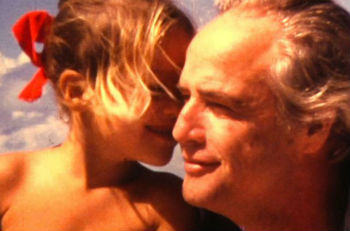 Like its subject, Listen to Me Marlon is a bit unruly. Some of Riley’s choices work better than others: the assemblage of clips is impressive, the cloying musical score and random shots of wind chimes less so. But the film casts a spell. Above all, it is a bracing look at Brando as a personality — sometimes cogent, sometimes inchoate, always intriguing. When he rambles about Hollywood (“There are no artists. We are businessmen and merchants, and there is no art”) it doesn’t take much to see the seeds of Colonel Kurtz’s ravings in Apocalypse Now, and recognize the fine line between insight and madness. Later, we can only grimace as we witness the downward spiral of his life, and relive the death of his daughter Cheyenne. Some might say that Brando’s career was one of never-completely-fulfilled promise, but like other famous Method players who later became caricatures of themselves, his star burned brightly while it burned, and we have masterpieces like The Godfather and Last Tango in Paris to show for it. Listen to Me Marlon captures its subject’s unquiet mind, and in a gentle final twist, the last words we hear are Brando self-hypnotizing himself: “Bliss is coming over you… until the next time, sleep.” The man might have envied the idea of peace, but he was too restless to ever hold onto it.
Like its subject, Listen to Me Marlon is a bit unruly. Some of Riley’s choices work better than others: the assemblage of clips is impressive, the cloying musical score and random shots of wind chimes less so. But the film casts a spell. Above all, it is a bracing look at Brando as a personality — sometimes cogent, sometimes inchoate, always intriguing. When he rambles about Hollywood (“There are no artists. We are businessmen and merchants, and there is no art”) it doesn’t take much to see the seeds of Colonel Kurtz’s ravings in Apocalypse Now, and recognize the fine line between insight and madness. Later, we can only grimace as we witness the downward spiral of his life, and relive the death of his daughter Cheyenne. Some might say that Brando’s career was one of never-completely-fulfilled promise, but like other famous Method players who later became caricatures of themselves, his star burned brightly while it burned, and we have masterpieces like The Godfather and Last Tango in Paris to show for it. Listen to Me Marlon captures its subject’s unquiet mind, and in a gentle final twist, the last words we hear are Brando self-hypnotizing himself: “Bliss is coming over you… until the next time, sleep.” The man might have envied the idea of peace, but he was too restless to ever hold onto it.
